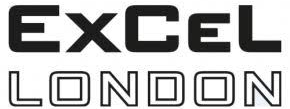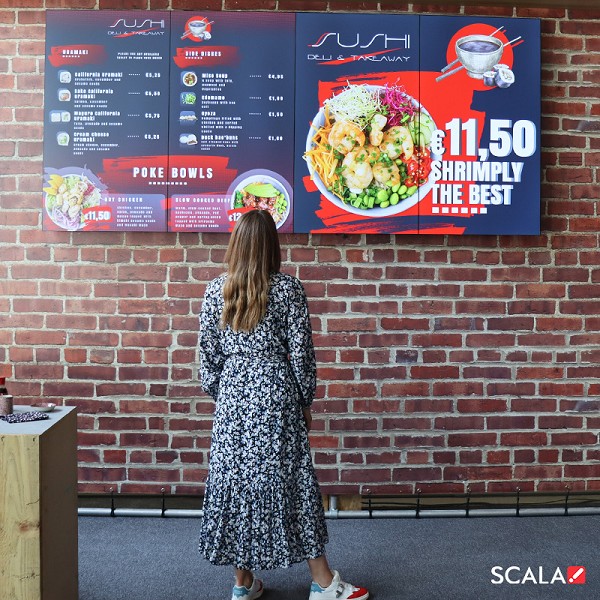In Unpredictable Times, Signage Needs to be Truly Smart
Lockdowns and capacity restrictions shone a light on the role that digital solutions had to play in
the safety of customers and the smooth running of hospitality businesses. As restrictions have
been lifted additional requirements have been added to restaurants such as allergen and calorie
labelling. Threats to businesses have also emerged — from a lack of employees to gaps in the
supply chain. Again, digital signage and solutions have a role to play in mitigating some of these
issues but to do so well, installed signage needs to be truly smart as well as flexible with the
ability to not only clearly communicate to customers but also give key insights back to the
businesses.
By now, the word “smart” preceding a word or phrase implies a level of advanced functionality
— your smartphone or smart car operates on a higher level of sophistication due to technology
working behind the scenes. Smart digital menu boards up the ante on customer experience,
employee experience and offset aspects of day-to-day challenges (labour, supply chain,
information display, speed, accuracy) that is all too familiar for any quick service restaurant,
grocery or convenience store.
Below we break down the basics of what makes a “smart” digital signage system and what
brands need to consider when looking to install a digital solution.
What Does a Smart Digital Menu Board do?
With the right content management system (CMS) and technology partner, the possibilities of a
smart digital signage systems are varied and many but some of the most important aspects of a
The smart digital menu board include:
-Delivering accurate, relevant menu content that updates in real-time in order to make
most of the promotional opportunities and mitigate business threats such as supply and
labour shortages
-Personalising and contextualising promotions based on everything from geographic
location, to weather and transaction history
-Integration with technology, such as wireless sensors, cameras and AI to deliver
responsive content
Arguably, the most important component of a smart digital menu board is the content displayed
on the screens. Relevant content engages and converts. The tricky part is ensuring that content
appeals to each customer. Smart technology does this automatically, often by displaying a
combination of static and dynamic content. An example of static content would be the text
menu. This text might change for breakfast, lunch or dinner, but these are scheduled changes
that most digital menu board CMS can achieve without being smart.
Dynamic content would be your Limited Time Offer (LTO). A smart digital menu board manages
this dynamic content separately, governed by a set of rules that you choose based on the data
that your content management system has available. Is it a hot day? Display a cool beverage
with crystal clear droplets of condensation running down the sides. Is it cold? Is it morning?
Display a hot coffee with the steam rising. As you can imagine, this context-based content are
more effective and can drive higher beverage sales and profitability.
Dynamic displays also come into play to mitigate supply and staff shortages. With a flexible system, menu items can be removed once ingredients have been exhausted or alternatively,
items that require less time to prepare can be promoted more frequently when staffing levels are
low.
Smart signage allows you to not only separate your dynamic frames, it allows you to
programmatically choose what content to display. A handful of unique components enable this
(and any) smart feature. These components are:
Smart digital displays
Sensor-enabled digital displays improve how you show menu items, offers and promotions with
optimal clarity and relevance. At a fundamental level, digital displays deliver a more engaging
experience, but advanced technology brings in real-time, conditional information that drives on-
screen relevance. This is true for digital menu boards for restaurants, near the deli counter in
grocery stores, as well as in-aisle, near the made-to-order, coffee and checkout in convenience
retail. Smart outdoor digital menu boards in the drive thru and order pickup areas deliver speed
and convenience at a higher rate, moving guests through the line while improving accuracy.
Sensors
Sensors are key components of the relevance and responsiveness of your digital menu board
content. Strategically placed sensors allow you to gather data that gives valuable insight into
what’s happening in and around your restaurant or store. Some of these insights include
demographics, dwell time, gathering areas, asset detection and pathing throughout the store. By
understanding customer and employee behavior, patterns and preferences, you can strategise
(and measure, test and adjust!) exactly when and how content will be most effectively displayed.
Similar to the responsiveness of online shopping, smart digital menu boards are honing in on
what’s most relevant to current audiences.
Artificial Intelligence
The third component of making a digital menu board “smart” is artificial intelligence. AI delivers
decision logic to menu items being displayed — this allows you to tailor the content to what is
shown, when, where in the menu design, and even who is seeing the content. With a sound
strategy in place and learning over time, AI allows you to personalize, automate and optimise
the store, restaurant interior and drive thru experience to improve sales, loyalty and efficiency.
Smart digital menu boards are proven to increase average check in any high volume consumer
environment — in the QSR drive-thru, inside the convenience store, at the grocery store deli
counter, cinema and more.
Personalisation
Personalisation is another key opportunity offered through digital signage. Personalisation is not
only good for businesses; customers love it. 3 out of 4 consumers expect personalisation and
get frustrated without it (McKinsey, “The Value of Getting Personalization Right…”). Customers
want personalised experiences because relevant information means they do not need to say no.
They feel more connected, understood, and considered.
Omnichannel is a great example of the power of personalised content. Today’s top quick service
restaurants use personalisation in their drive-thru and pickup, allowing customers to pick up
online orders as they prefer. A traditional digital menu board shows images and enticing videos
of your menu offering, limited-time offers and promotions. A modern digital menu board is a
dynamic, data-driven communication platform that is truly integrated into your communications
strategy, opening major opportunities for customer loyalty, engagement and satisfaction.
Connect with your customers on mobile and seamlessly continue the conversation in the
restaurant or the store.
With appropriate permissions, digital signs and menu boards allow you to greet the customer,
highlight LTOs and high-margin items, display relevant menu suggestions and ensure accuracy.
Digital menu boards in the drive thru open up an opportunity for true one-to-one personalisation.
By recognising known, loyal customers when they enter the drive thru, rules on the backend can
trigger the digital menu board to update in real time, promoting items that appeal to each unique
customer such as a kids menu or vegan items. Even without personal information, regional data
can be used to avoid prominently displaying items which may be inappropriate in particular
communities.
Insights
In addition to providing a channel to display promotions to customers or facilitate orders, digital
also gives businesses the key insights they need to optimise their operations.
A system such as Walkbase TREQ, available through Scala, can provide key data on customer
flow in restaurant space which can be used to optimise staff, ordering boards and furniture
placement. Sensors such as eye trackers can reveal how effective promotional messages are,
while selection data from the touchscreen digital menu kiosks show which items are most
frequently searched for or bought with other items. All of this data can be used to provide a
better customer experience and increase sales.
Digital Menu Boards for Restaurants: Key Considerations
Scale is the most important factor to consider when approaching a new digital menu board
deployment. Most content management systems are designed with a small handful of endpoints
in mind: mobile, tablet, and desktop. In digital signage, often we see variations in content across
locations. Everything from pricing to LTOs needs to be flexible.
Your CMS also needs to be able to accommodate network differences. Rural locations might
have far less bandwidth for image downloads than urban locations. How and when will low-bandwidth locations download digital menu board content without interfering with business
operations?
From a tactical and future growth perspective, operators should consider these questions as
they approach vendors:
-Does your digital menu board technology partner have direct experience and authority over hardware and software for digital signage?
-How will you integrate live data into your content?
-Does your content strategy break out segments by daypart, considering actual work conditions such as the number of employees you have on the floor and how busy they
will be? Does it provide goals and hypotheses that your test project will answer?
-Can your provider integrate with any Point of Sale (POS) or loyalty app, or are they tied to specific technologies?
-Is the solution proven at scale?
-What does support actually look like in terms of expertise and ability to solve real problems?
-Is there room to grow the digital menu board into advanced use cases, including AI- and
sensor-driven personalisation and responsive systems?
Scala is part of the STRATACACHE family of technology companies. STRATACACHE provides
technology to eight of the top ten QSRs in the US so Scala has the right expertise to ensure
brands use smart digital systems effectively. Talk to us about the brands we have worked with
and discover more about how a Scala solution can help you achieve your goals. You can see
Scala solutions include smart digital menu boards, ordering and pickup systems at stand M10
at the Restaurant & Bar Tech, October 19/20 2022 at London's ExCeL. Find out more by visiting
scala.com












